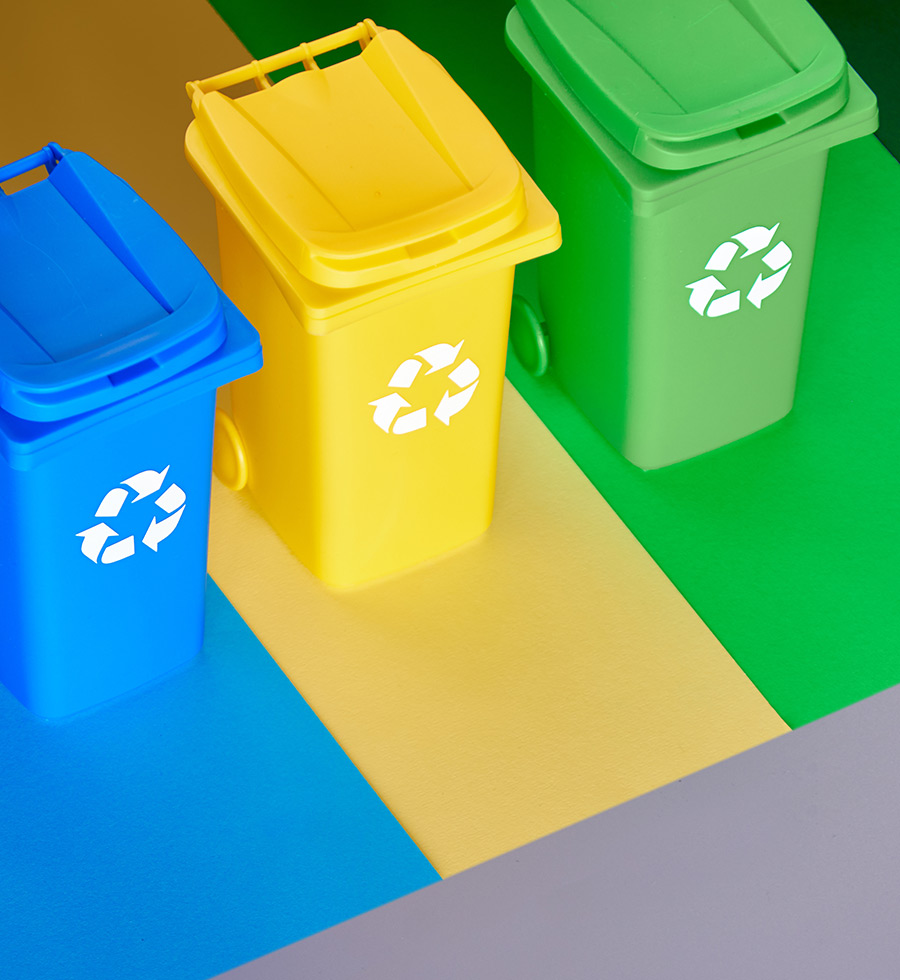To avoid waste and protect the environment, it is essential for every citizen to know how to correctly separate domestic waste according to its type, so that it can be specifically treated in the most suitable disposal or recovery centre.
Waste management procedures range from land-filling to incineration in waste-to-energy plants, from composting organic waste to properly recycled material (paper, glass, aluminium, steel, plastic, etc.).
Separate collection was implicitly imposed on the entire EEC territory by directive 75/442 of 1975 (now replaced by more recent directives), which in article 3 required the promotion of waste reduction, recovery and reuse and in article 7 the “rationalisation” of collection, sorting and treatment.

The following is all the information needed to separate and dispose of waste correctly.
WHAT TO PUT IN IT
All materials that cannot be collected separately (rubber, foam rubber, bones, ceramic shards, cigarette butts, animal litter, rags, coat hangers, treated or painted wood, nappies, tampons, gauze, plasters, plates, paper/plastic cutlery, chemical or oiled or dirty paper, non-electronic toys, filters and hoover bags, CD/DVD/musicassettes/VHS and cases, etc.)
HOW
They must be contained in tightly closed bags or wrappers, never leave bags on the ground next to the bins.
WHAT TO PUT IN IT
High-moisture food and vegetable waste: kitchen waste, fruit and vegetable waste, spoiled food, coffee grounds and tea filters, egg shells, bio-plastic (biodegradable) plates and glasses, fruit peelings, stones, greasy paper towels (scottex, paper handkerchiefs), cut plants and small plant prunings, bread, unlit fireplace ashes, small bones and mollusc shells
HOW
Green waste should be placed loose in the container; food waste should be placed in the container collected in biodegradable bags made of maize (such as Mater-Bi) or paper (e.g. bread bags).
WHAT TO PUT IN IT
Glass containers (bottles, jars, food jars, bottles, glass beakers, etc.).
HOW
They should be placed in the container directly free of liquid and/or product; soiled recipients should be well drained and rinsed. Caution: do not put ceramics, crystal or light bulbs in the glass bin.
WHAT TO PUT IN IT
Cans for beverages and food (soft drinks, oil, etc.), food preservation tins ( peeled tomatoes, peas, tuna, etc.), metal cans and tubs, aluminium pet food cans, caps and closures for jars and bottles, used food cans and personal hygiene products (e.g. deodorants, lacquers, cream)
HOW
They should be placed in the container directly free of liquid and/or product; soiled recipients should be well drained and rinsed. Tins and cans should be crushed to reduce their volume.
WHAT TO PUT IN IT
Newspapers, magazines, books, notebooks, wrapping paper, cardboard, paper bags, cardboard boxes for shoes and foodstuffs (pasta, rice, salt, etc.), detergent packaging, photocopies and various papers, cardboard packaging, poly-coupled materials (beverage cartons in general), papers containing small parts of different materials (plastic windows on envelopes or pasta cartons). Please pay attention to sales receipts, which should not be disposed of as paper!
HOW
Cartons and boxes should be folded to reduce their volume, metal staples and adhesive tape should be removed.
WHAT TO PUT IN IT
All packaging: plastic bottles, vials (e.g. detergents, cleaners and liquid cosmetics), plastic or polystyrene food trays, food films, plastic food packaging and bags (such as pasta bags), fruit and vegetable nets, plastic fruit crates, disposable plastic cups.
HOW
Drain and, if necessary, rinse dirty containers. Packaging must not contain residues of organic waste and/or hazardous substances and must be crushed to reduce the volume.
HOW
Spent batteries are hazardous waste, as they contain heavy metals such as mercury, nickel, lead, lithium and cadmium. If disposed of incorrectly, they can pollute the soil and groundwater. They must be collected separately in order to be treated safely, and must be placed in the appropriate disposal containers.
HOW
Expired medicines are non-recoverable waste. They are composed of active ingredients that can alter the natural balance of the environment. Where to dispose of them then? Expired medicines must be collected separately and placed in the appropriate disposal containers. However, it is important to separate the packaging in which the medicines are contained, such as paper boxes and leaflets (which go in the paper bin), blister packs and plastic or metal packaging, which should be separated accordingly.
Each municipality organises the separate collection service also with multi-material systems (e.g. glass-can or glass-plastic).